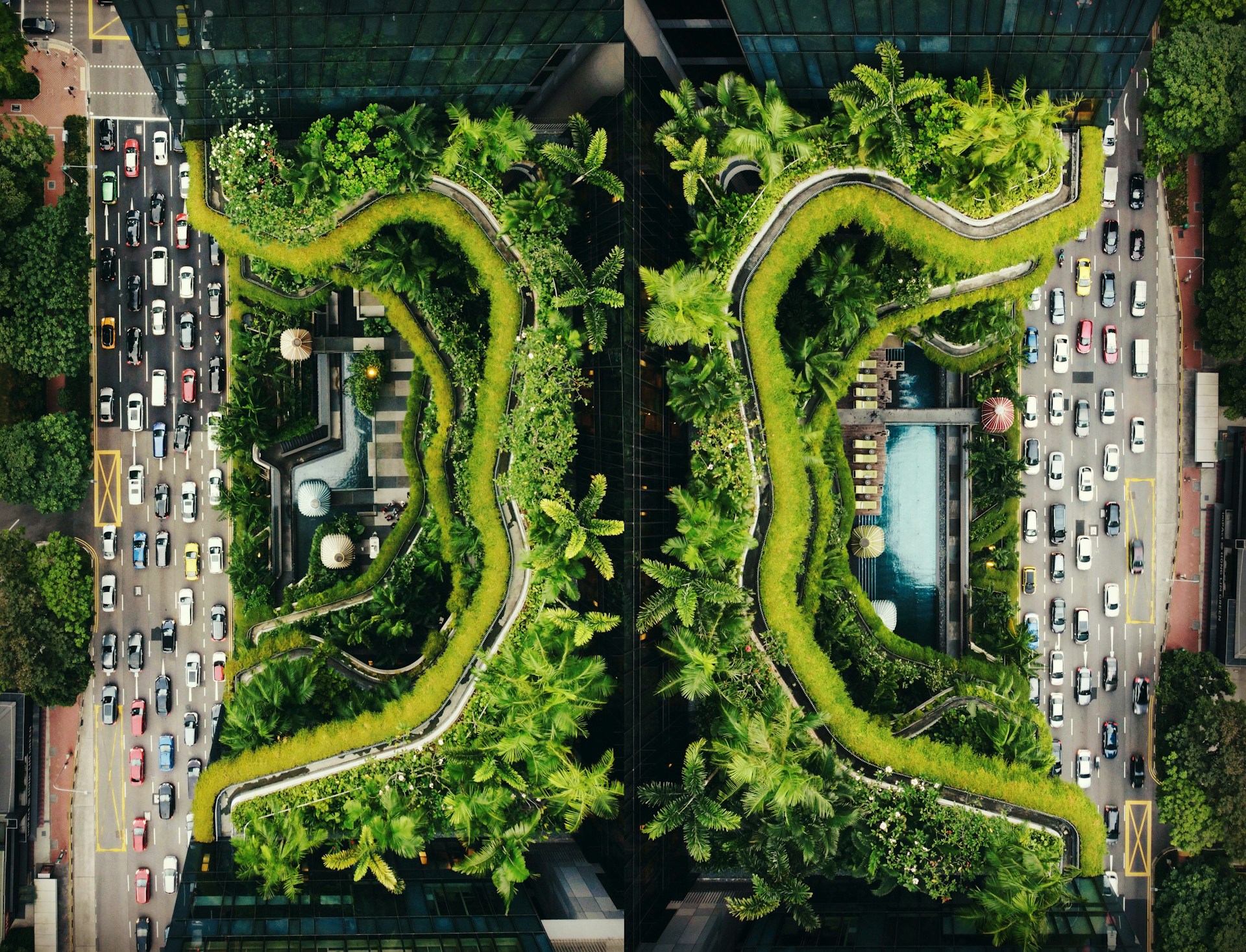Urban Ecosystems: Enhancing Biodiversity in Cities
Historically, urbanization results in environmental destruction along with habitat destruction that decreases biodiversity.
Urban areas can maintain plentiful ecosystems through strategic planning and proper management.
Urban ecosystems is the combination of green areas with sustainable development practices together with conservation efforts enables urban spaces to host healthy populations of humans and wildlife naturally.
The author examines three specific ways which cities can enhance biodiversity by using green infrastructure together with urban wildlife conservation and community participation.
Green Infrastructure: Creating Habitats in the Urban Landscape
Urban planning that integrates natural elements becomes known as green infrastructure through the implementation of parks and green rooftops and rain gardens as well as urban forests.
The natural features of urban ecosystems work against urbanization effects by supplying vital living spaces for wildlife.
Urban Forests and Street Trees
Biodiversity finds its primary support from both trees and urban forests.
Biodiversity finds its shelter and nesting locations on these spaces which serve both birds and small mammals and insects.
Native tree species serve as exceptional landscape features because they provide food resources along with habitat requirements for native wildlife.
Trees support clean air quality while also cooling cities through their cooling effect and build stronger ecological frameworks in urban environments.
Green Roofs and Vertical Gardens
The implementation of green roofs and vertical gardens uses desert spaces to generate bio diverse habitat areas.
Both structures enable bees and butterflies to pollinate and simultaneously protect buildings from heat loss and attract reduced storm water during rainfall.
These designs gain ecological worth along with sustaining local biodiversity through the inclusion of native plants.
Parks and Urban Wetlands
The cityscape benefits from important green spaces, which wetlands and parks provide.
Wetlands serve as pollutant-filter mechanisms to support bird and amphibian breeding grounds alongside feeding habitats for aquatic species.
Urban areas become more biodiverse and achieve better water management when wetland restoration or creation occurs.

Urban Wildlife Conservation: Supporting Coexistence with Nature
Lots of species now survive in urban landscapes yet human activities generally endanger their existence.
The enactment of wildlife-friendly practices enables urban ecosystems to protect biodiversity in addition to developing peaceful relations between people and wildlife.
Pollinator Pathways and Native Plant Gardens
Bees’ butterflies together with hummingbirds serve an essential role in both plant reproduction and food production processes.
The essential species lost their natural habitats because urbanization occurred across the landscape.
Native plants planted in pollinator-friendly gardens will create urban ecosystems for sustaining pollinating species populations.
The municipalities of Toronto and London created pollinator pathways which provide green space connections to benefit insect diversity.
Wildlife Corridors and Connectivity
Urban areas face significant difficulties due to the breaking up of their natural ecosystems.
Spaces fashioned as wildlife corridors through green bridges and tree-lined streets and interlinked parks let animals traverse between territories.
The corridors establish vital passages that stop species from becoming isolated while sustaining genetic variety for lasting species survival.
Reducing Light and Noise Pollution
The combination of artificial lights with high levels of noise produces disturbances that modify wildlife behaviors which affects how animals migrate along with their ability to communicate and reproduce.
The establishment of shielded lighting combined with reduced unnecessary illumination together with noise-absorbing vegetation creates a more wildlife-friendly urban setting.
Conservation
The achievement of urban biodiversity programs requires active involvement of local communities to create urban ecosystems.
City spaces develop into nature sanctuaries where people thrive when the community of residents joins forces with policymakers and business leaders.
Citizen Science and Monitoring Programs
Participation in biodiversity monitoring programs by local residents allows valuable data collection about species and environmental transformations in the area.
iNaturalist and eBird serve as wildlife observation platforms where civic members create biodiversity conservation records through their observations which boost awareness of urban species diversity.
Urban Farming and Sustainable Landscaping
The implementation of community gardens along with rooftop farming and regenerative landscaping methods creates biodiversity benefits which also strengthens the local food supply system.
A combination of native plants with vegetable crops and herbal species in urban gardens both supports pollinators and generates small habitats inside urban zones.
FAQ
1. Urban areas need biodiversity for what reason?
Cities that grow diverse ecosystems improve environmental health along with air and water cleanliness while supplying needed habitats for wildlife populations.
Creating greener spaces improves both human health and well-being since these spaces promote better physical and mental wellbeing.
2. What are some simple ways individuals can help increase urban biodiversity?
The public can help biodiversity growth through plantings of native flowers and developing pollinator-supporting gardens and using fewer pesticides and supporting citywide conservation initiatives.
The enhancement of biodiversity results from involvement in citizen science programs and support for green policies.
3. Wildlife corridors provide what advantages to multiple benefits do urban ecosystems receive from wildlife corridors?
The connectivity of wildlife corridors maintains natural habitat by providing a movement path throughout separate areas of land. The integration of natural habitats into urban spaces creates genetic diversity and decreases wildlife conflicts between animals and humans together with assisting species to adapt for survival in urban zones.
4. How can cities reduce the negative impact of light and noise pollution on wildlife?
Up lighting technologies with hoods serve as one solution for cities in addition to dimmed light controls and warmer color bulbs which reduce disruption towards night inhabiting species. Green buffers consisting of streets lined with trees together with urban forests act as sound-absorbers to decrease noise pollution while offering peaceful habitat space for wildlife.
5. What serves as exemplary practices in biodiversity advancement within urban ecosystems?
The cities of Singapore and London have proven how integrated biodiversity planning can work through their implementation of vertical green elements and pollinator pathways. Amsterdam along with several other cities has introduced floating wetlands and wildlife corridors to both support local ecosystems and increase urban biodiversity numbers.
Also read: The Impact of Urban Densification on Infrastructure

